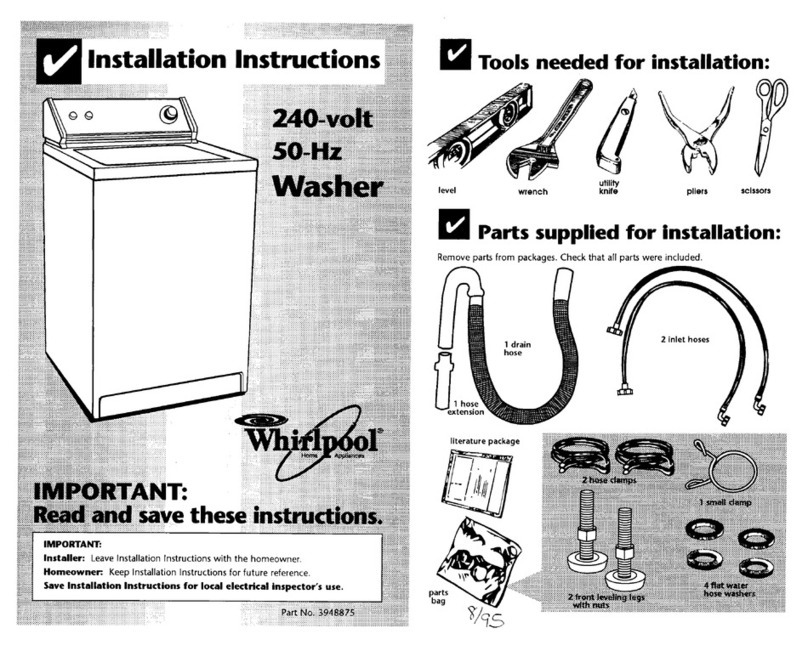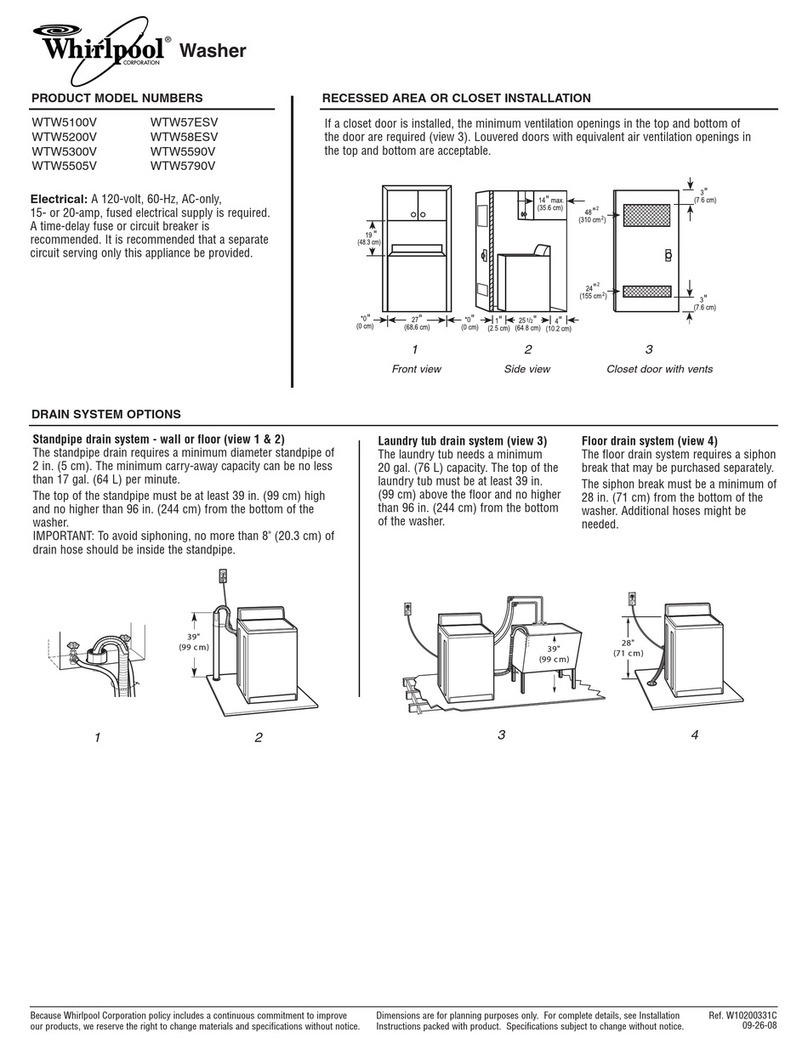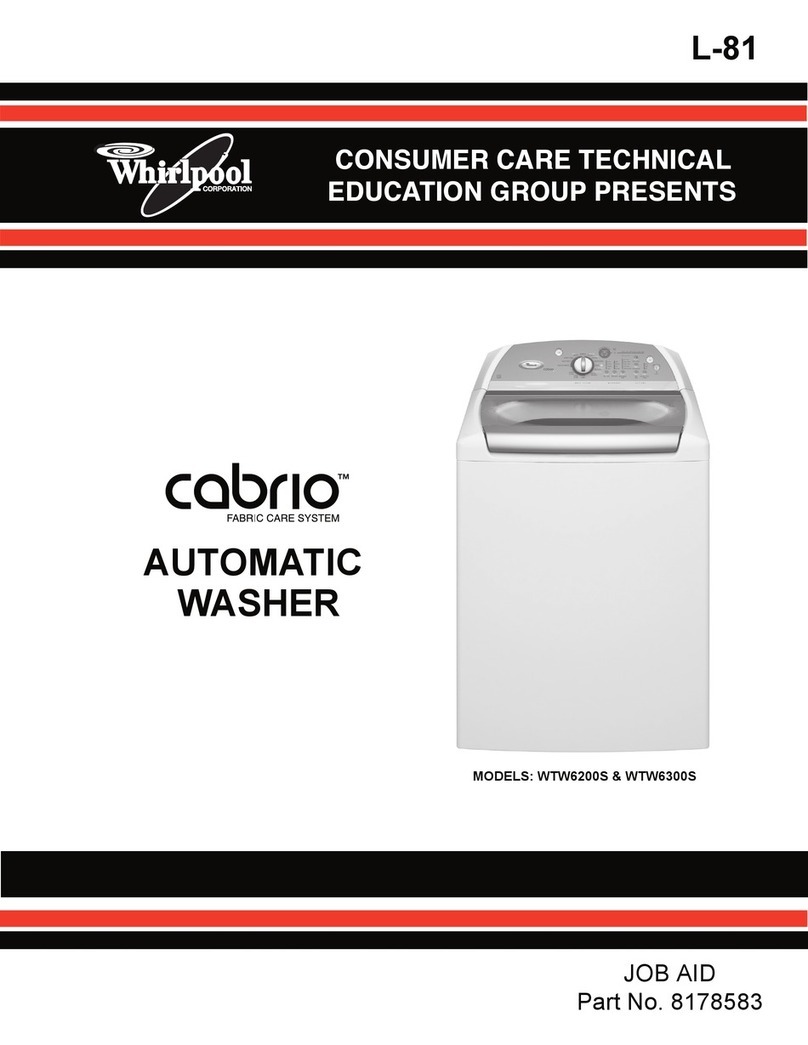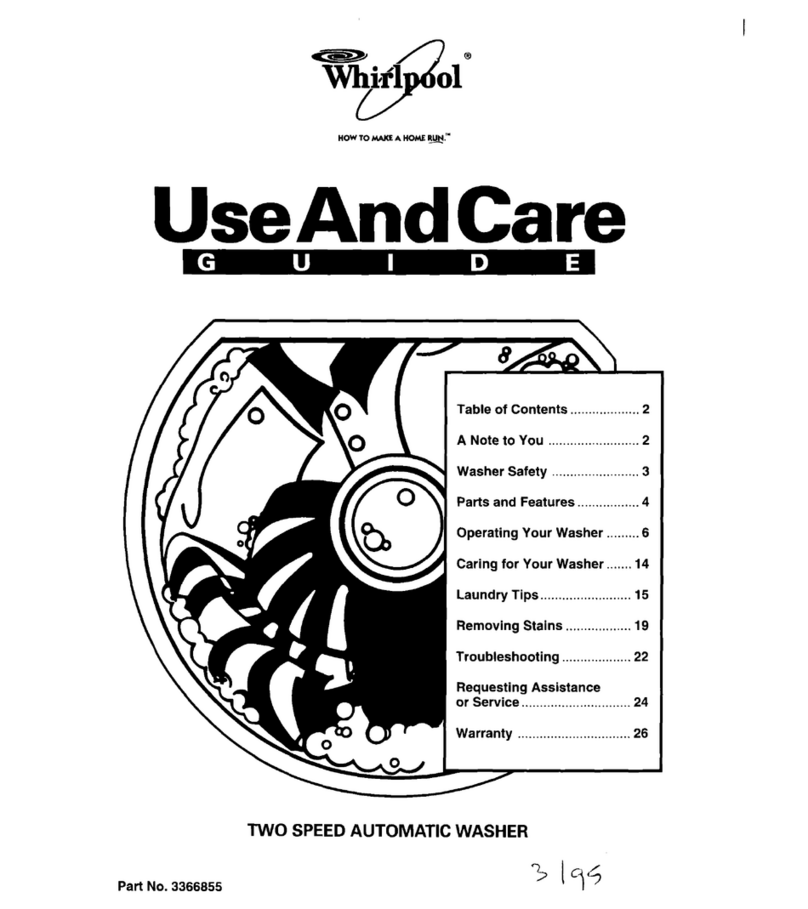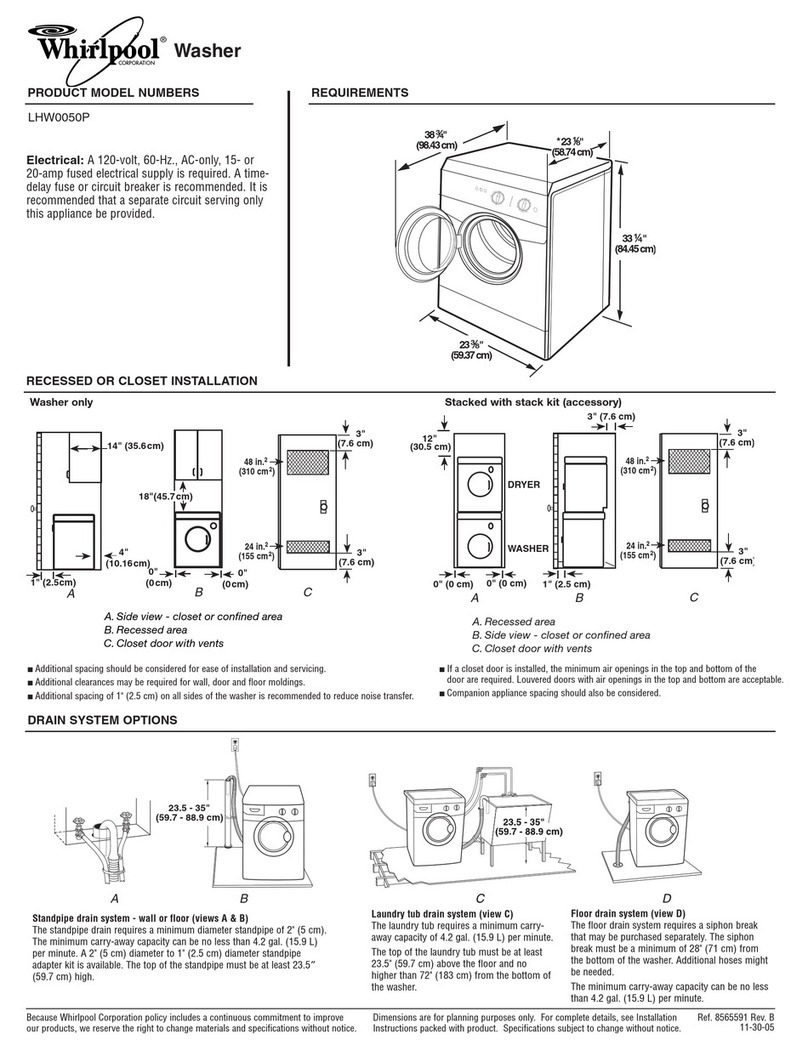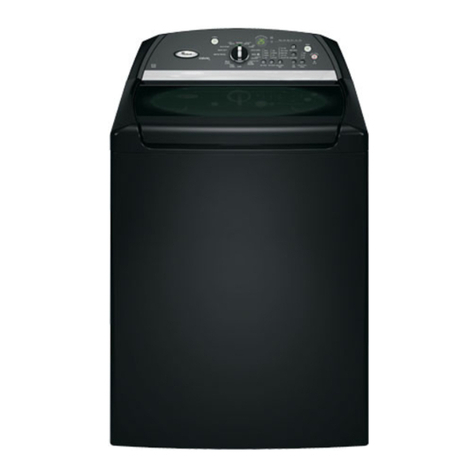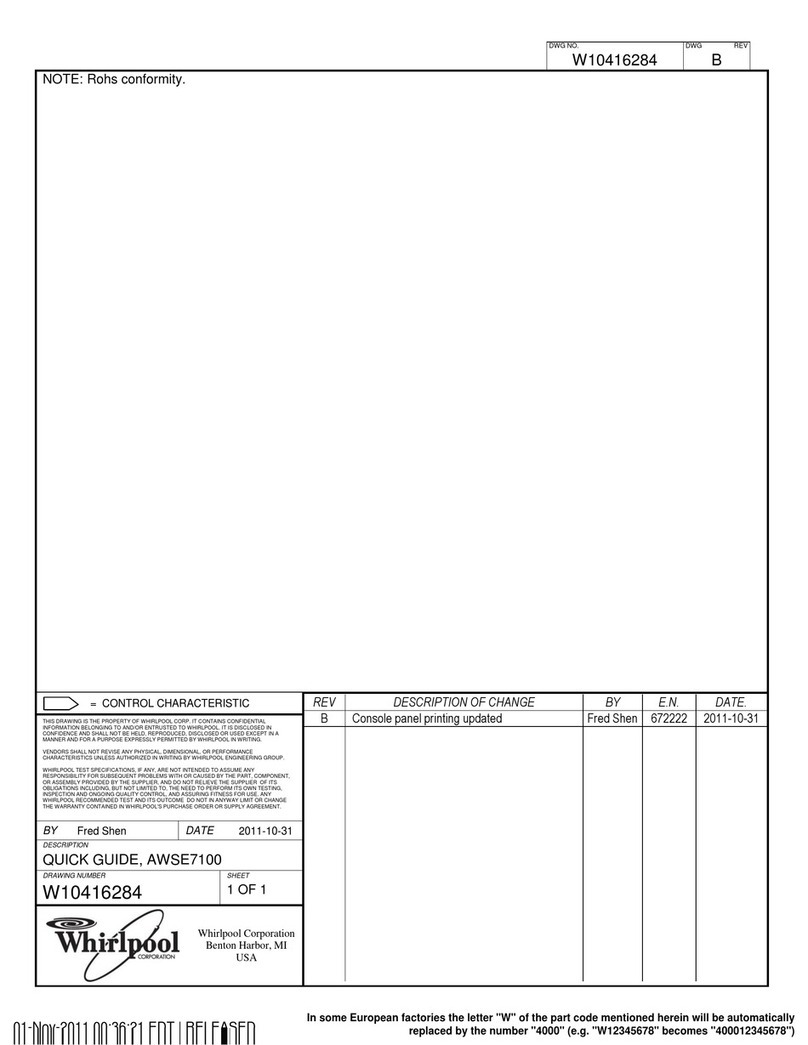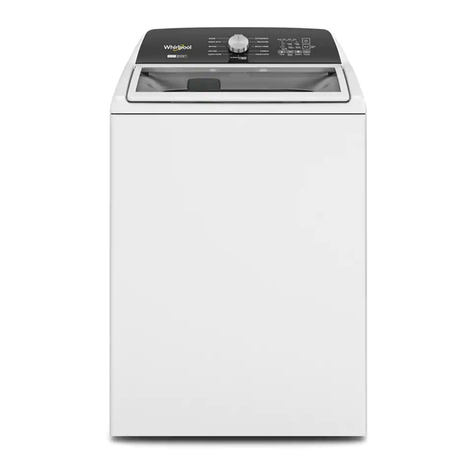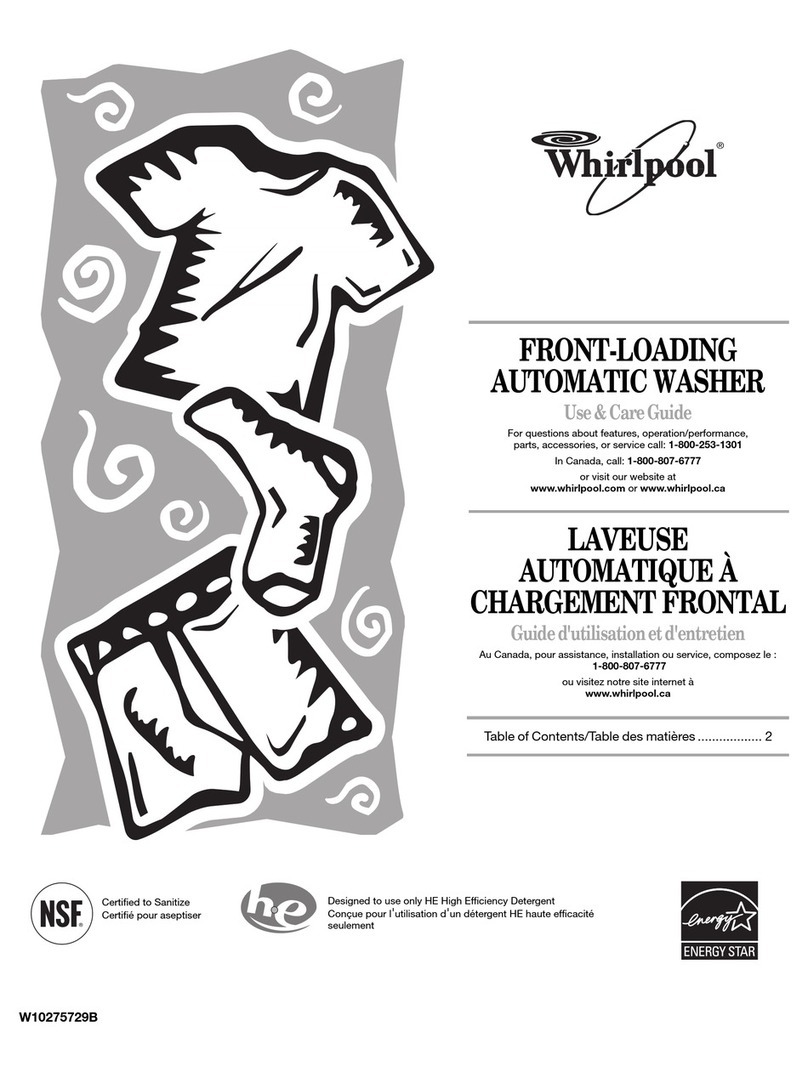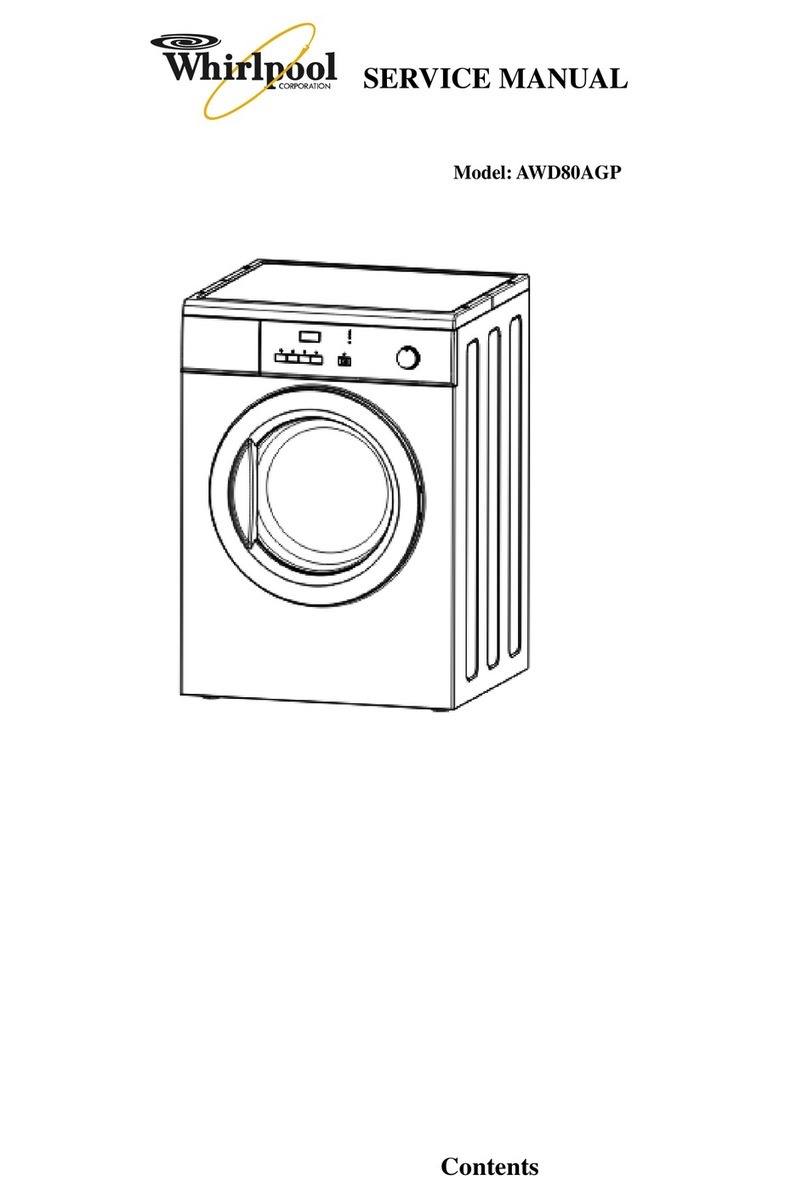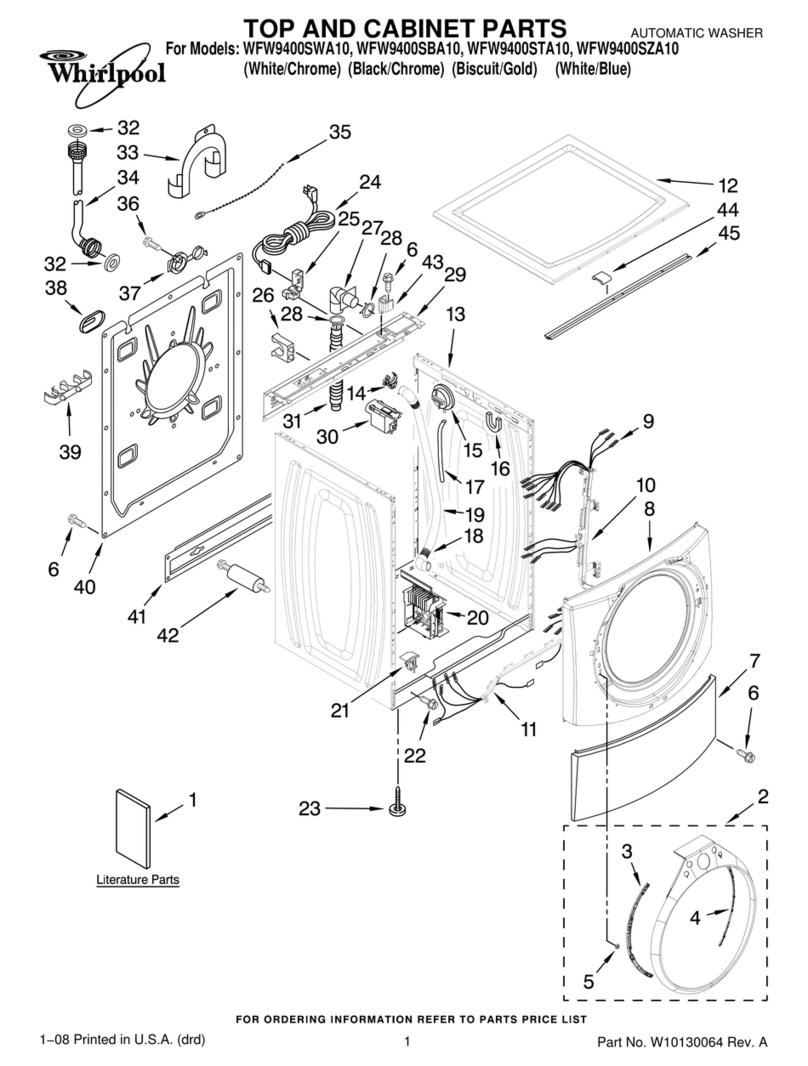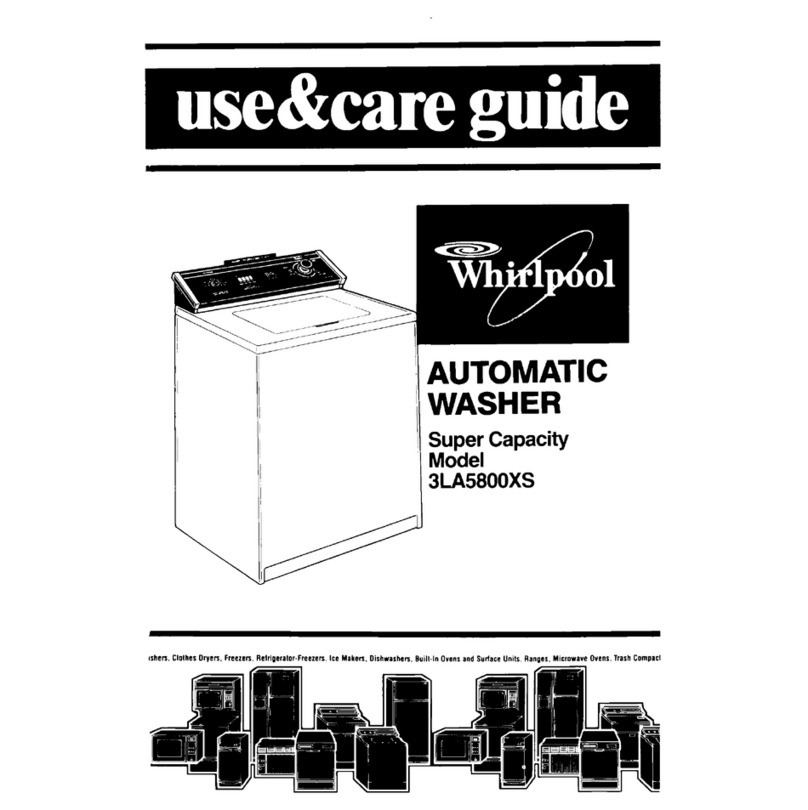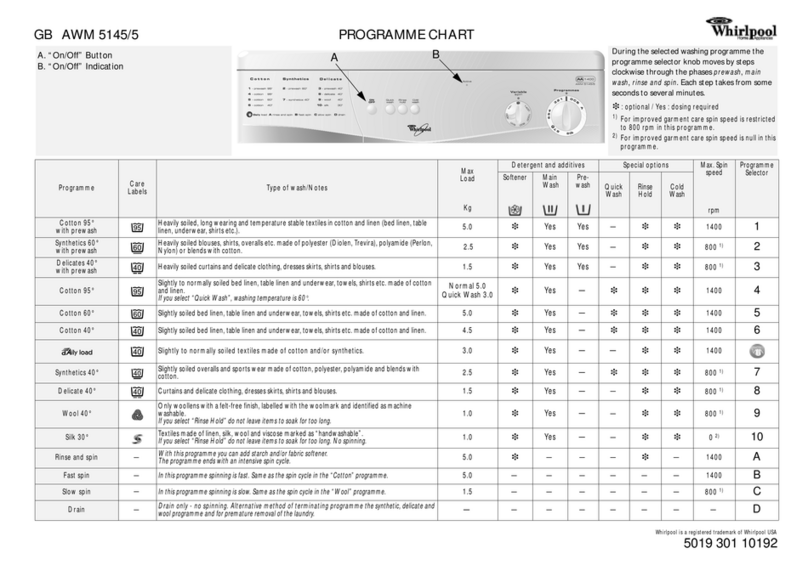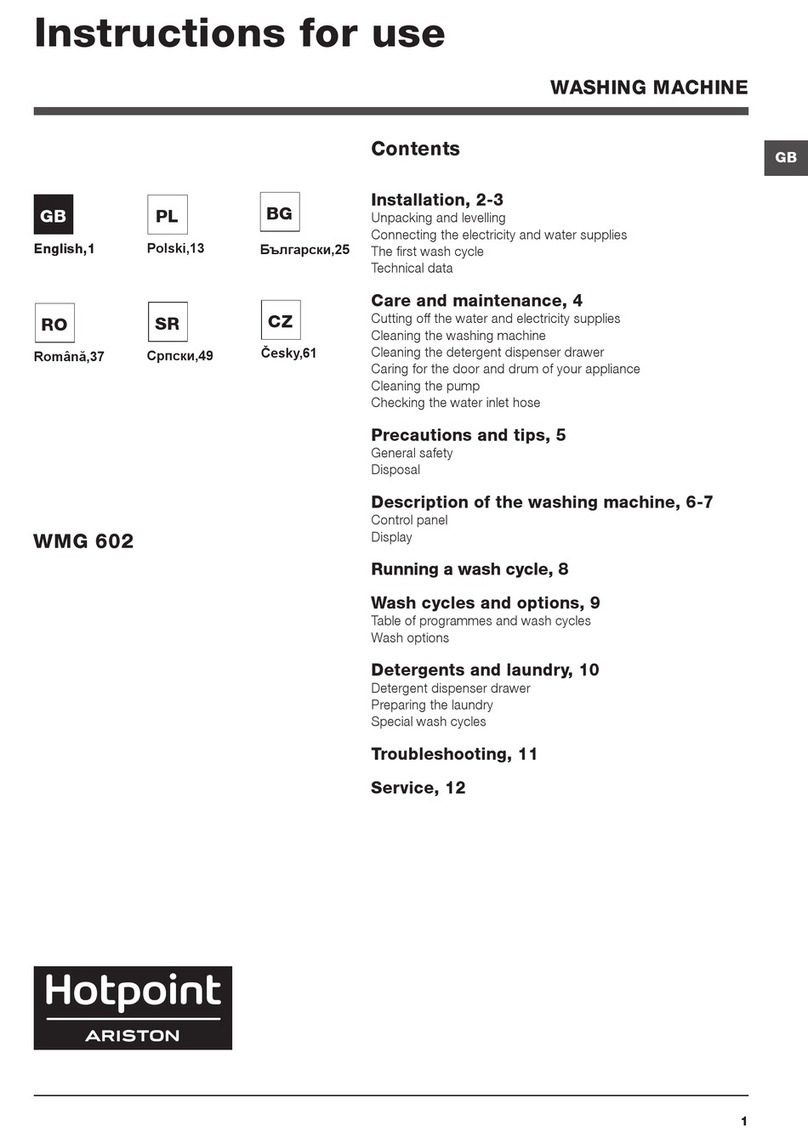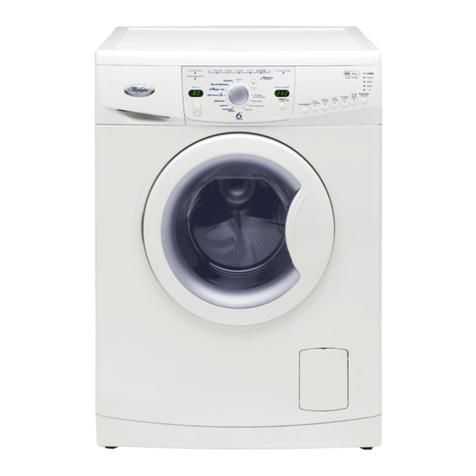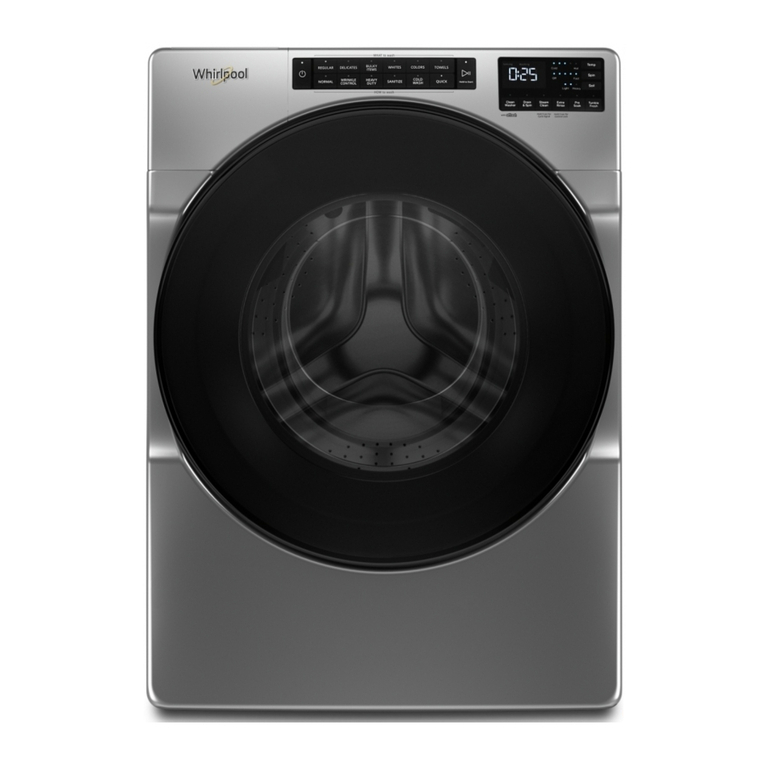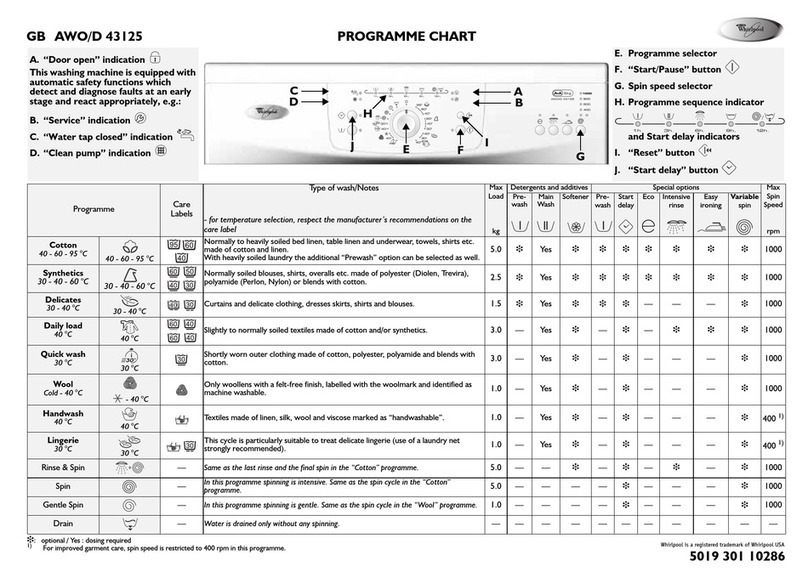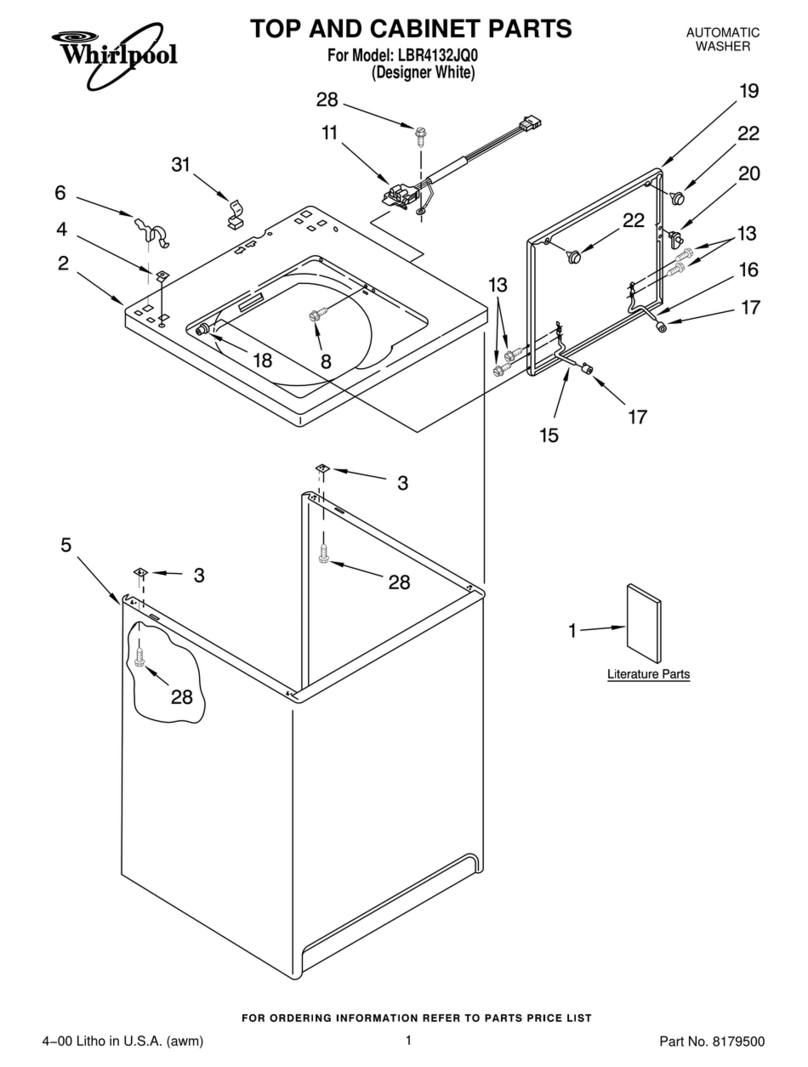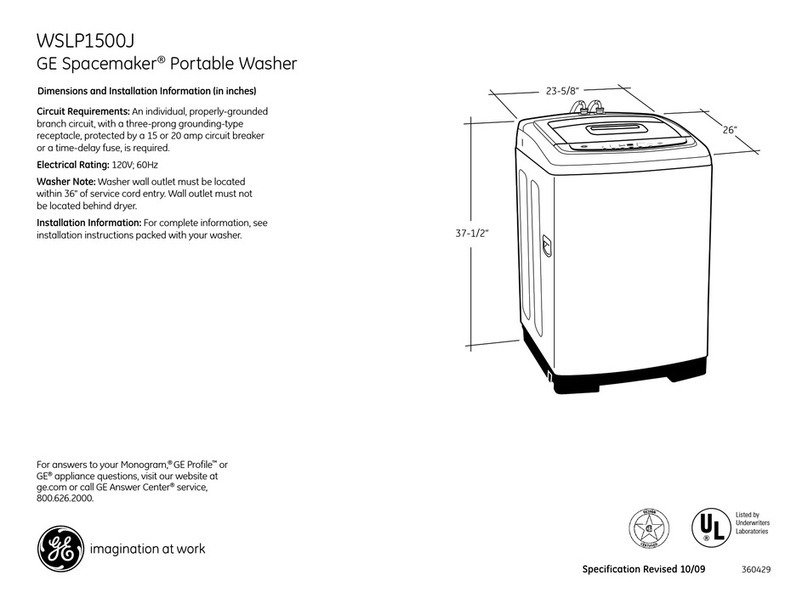
5019 301 10039
Whirlpool is a registered trademark of Whirlpool USA.
Prewash cycle increases programme duration approximately 15 min. Consumption values were measured in normalized
conditions in compliance with Standard IEC 60 456. Consumption data in the home may vary with respect to the values in
the table in relation to the water supply pressure and temperature, the load and the type of wash. The data on the energy
label refer to the programme Cotton 60°C.
Add the detergents as described in the programme
table or in the chapter “Detergents and Additives”in
the booklet.
1. Open the tap.
2. Set the programme selector to the desired
programme.
3. Set the temperature selector to the desired
temperature.
4. Special options can be selected.
5. Checkthatthedooris well closed and turn on the
washing machine by pressing the “ON/OFF”
button. The indicator lights up, indicating that
the washing machine is on.
“Half Load” button
•Reduces water consumption, above all during rinsing.
Suitable for lightly-soiled laundry and small loads
(max 3 kg).
“No Spin” button
•Excludes spinning from programme, press button.
Suitable for delicate laundry.
Note:withthe“Cotton”and“Synthetic”programmes
a short spin cycle is provided in any case, even if the
exclusion has been selected, in order to optimize
rinsing results.
“Rinse Hold” button
•The laundry remains in the last rinse water
without progressing to the final spin cycle to
avoid creasing and prevent colours from
changing.
•This option is particularly recommended for the
programme “Synthetic”or “Delicate”.
•This function is particularly useful if you want to
postpone spinning to a later time, or if you want
to drain only.
CONSUMPTION DATA
Programme Temperature
Selector
(°C)
Load
(kg)
Water
(l)
Energy
(kWh)
Estimated Programme
Duration
Min.
Cotton with prewash 95 5.0 80 2.00 120
Cotton 95 5.0 70 1.80 110
Cotton 60 5.0 70 1.20 110
Synthetics 60 2.0 60 0.90 85
Cotton short 40 2.5 65 0.70 75
Synthetics short 40 2.5 60 0.60 75
Delicate 40 1.5 80 0.60 70
Wool 40 1.0 80 0.60 65
ADD DETERGENTS, CLOSE THE DOOR AND SELECT THE
PROGRAMME SELECT ANY DESIDERED OPTION
Terminate the “Rinse Hold” option:
•Press the “Rinse Hold”button again; the
programme will terminate automatically with
the final spin cycle for the present wash
programme.
If you do not wish to spin the laundry, turn the
programme selector knob to the “Drain”
programme.
“Gentle Wash” button
•Reduces the mechanical wash strenght from
strong to delicate.
To reselect a programme when a cycle has already
started:
1. Switch off the appliance by pressing the “ON/
OFF”button.
2. Select the new programme, temperature and
options.
3. Start the programme by pressing the “ON/OFF”
button again.
1. At the end of the programme the programme
selector moves to the stop position.
2. To unload the washing machine wait for the
door to unlock (about 2 minutes).
3. Switchoff the washing machine, openthe door
and take out the laundry.
4. Close the tap and leave the door ajar to allow
the drum to dry out.
Water level
To obtain low water consumption without
compromising washing results the water level
within the drum may not be visible.
Cleaning the pump filter
A regular filter check and eventual cleaning is
advisable.
Motor smell
Washing machine motor creates a typical electrical
smell during first cycles, this is normal and
disappears after a few cycles.
PROGRAMME CHANGE
PROGRAMME END
NOTES AND INDICATIONS FOR USE
